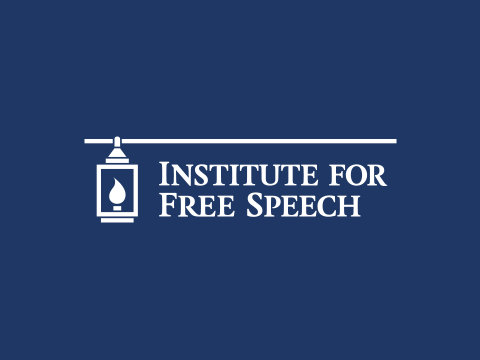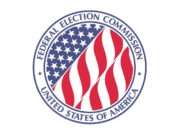The campaign finance “reform” movement often claims to want a more elevated public debate on issues, but that movement itself has long relied on hysteria and misrepresentation of facts to make its case. The latest – but hardly the least, and hardly a lonely – example is this editorial in the New York Times on Saturday.
One of the most controversial parts of the 2002 McCain-Feingold campaign finance law was its provision on “electioneering communications.” This provision made it illegal for most non-profit membership groups to run a broadcast ad that even mentioned a federal candidate within 30 days of a primary, caucus, or convention, or within 60 days of a general election.
Of course, Congress is often debating key pieces of legislation and other business in the last 60 days before an election. Over the last decade, among the issues debated in Congress within 60 days of election day have been the impeachment of the president; a ban on “partial birth” abortions; the federal budget and all that it entails in terms of spending policies; and the confirmation of federal judges, to name just a few. This year, it may be taking up the budget; lobbying “reform;” and other major domestic and foreign policy issues. Groups often seek to run broadcast advertising to persuade members of the public to call members of congress, urging them to support or oppose particular issues. For example, this year Wisconsin Right to Life seeks to run ads asking Wisconsin citizens to contact Senators Kohl and Feingold to ruge them to vote to move the Child Custory Protection Act to conference committee.
Under the McCain-Feingold law, the Federal Election Commission (“FEC”) has the authority to grant exemptions from this rule, so long as the exemptions do not allow ads that “promote, support, attack, or oppose” a candidate for federal office. 2 U.S.C. 434(f)(3)(B)(4). Earlier this year, the AFL-CIO and the U.S. Chamber of Commerce, along with several other organizations, filed a petition with the FEC asking it to craft a regulatory exemption for grassroots lobbying ads. This week, the FEC will take up such a proposal, as an emergency rule to take effect before this year’s elections.
The “reform” community, of which the Times editorial page is more or less the official mouthpiece, is, as usual, going beserk. In a fun post, Bob Bauer – who represents some of the groups petitioning for the exemption – points out how uninformative and ridiculous the Times editorial is. But Mr. Bauer does not actually review what all is wrong with the particulars of the Times editorial, and it occurs to us that some innocents – including many reporters and op-ed writers who take their lead from the Times – wouldn’t necessarily know. So we wanted to dissect the actual editorial.
“The Federal Election Commission, that great enabler of campaign loopholes, is now creating loopholes for itself. The panel is bypassing its own requirements for adequate public notice…”
Well, not exactly. Rather, the Commission is using its rules to pass a regulation. An agency has the authority to act more rapidly when it deems doing so to be “in the public interest.” 5 U.S.C. 553(b). The Commission notes that failure to act prior to this election would make this rule making moot. In other words, if it is in the interest of the public to have this rule, it is almost certainly in the public interest to pass it before this election. The FEC has even allowed public comment (as the major “reform” organizations know, having in fact filed comments), in accordance with the Administrative Procedures Act. The Times wants it to appear that something underhanded is going on, but it is not true.
“in a rush to consider a proposal that would allow a flood of special-interest money into the fall campaign, in the guise of protecting “grass-roots” ads that are supposedly devoted to issues, not candidates.”
Whether or not this is true goes to the merits of the FEC’s proposal, which the Times does not address.
“The proposal, … is a blatant attempt to bureaucratically kill a vital anticorruption provision of the McCain-Feingold law that has already been upheld by the courts…”.
This is rather misleading. The Courts have upheld the constitutionality of McCain-Feingold’s 60 day electioneering communications limits. They have said nothing about the FEC’s authority to author this exemption, which is specifically provided for in the statute. Maybe we should quote the relevant portion of 2 U.S.C. 434(f)(3)(B): “The term ‘electioneering communication’ does not include,…any other communication exempted under such regulations as the Commission may promulgate… except that under any such regulation a communication may not be exempted if it … is described in section 301(20)(QA)(iii) [2 U.S.C. 431(20)(A)(iii)[may not “promote, support, attack or oppose” a candidate]. So the Times attempts to suggest that the FEC is somehow violating a court order, or at least ignoring the courts, when that is clearly not the case.
The commission, an appointed panel of major party loyalists, is charged with defending the law, not subverting it
First, it’s not clear what the Times means with its ad hominem attack on the Commissioners as “major party loyalists.” It is, after all, a political appointment. Presumably, they mean to indicate that the Commissioners are violating their oath to uphold the law, or something akin to that. It’s a shameless, unsupported ad homimen attack, frankly, of the kind “reformers” claim to hate. As a second point, the Commission is not charged with defending or supporting the law, but with implementing and executing it. This is a not minor point – to suggest that the Commissioners must “defend” the law implies that they must advocate for it as it stands. Nothing could be further from the truth – no government agency requires its employees to “defend” the law, in other than the legal sense of standing by it in court. Commissioners are free to disagree with the law, and to suggest changes to the law, though obviously it is up to Congress to make such changes. The Commissioners’ job is to implement the law to the best of their ability. Again, the Times offers no evidence that they have failed – merely their ad hominem attack, based on an assertion of what the law “really means,” as if they, not the Commissioners, were appointed to make that decision.
The law bars the pre-vote broadcast of issue ads transparently designed to attack or bolster specific candidates. The proposal would allow the mention of incumbent candidates, supposedly to avoid stifling “true issue ads.” But just watch what the Washington legion of campaign law scholars and fixers make of this fresh run to pay dirt. Your local representative will be not-so-subliminally morphed to saint or sinner.
The proposal before the FEC specifically does not apply to any ad that “promotes, supports, attacks or opposes” a candidate for office. The Times won’t tell you this, but this is a very limited exception. The ad must:
a. refer to a candidate only in his capacity as a public officeholder, with no mention of personal qualifications, fitness for office, or personal characteristics, and no reference to party.
b. have as its subject matter a public policy issue under current consideration by congress or the executive branch;
c. urge the incumbent to take a particular position on that issue, or urges the public to contact the incumbent to urge him to take a position
d. refrain from promoting, supporting, attacking, or opposing a candidate; and
e. mention the candidate’s position on the issue only by quoting the candidate or reciting a vote.
Talk about your loophole! You can read the rule here (see p. 45-46) Of course, none of this appears in the Times.
After some repetitive rhetoric about the courts and the “emergency” session, the Times wraps up:
Congressional coffers already groan from more than half a billion dollars in campaign donations. The last thing voters need is another slathering of special-interest money.
This misleading statement might lead some to conclude that money could actually go to “congressional coffers.” In fact, ads exempt under this proposal would have to be run without any consultation with the candidates mentioned, or their opponents. None of it would go to congressional campaign funds.
No wonder that research by MIT Professors Stephen Ansolabehere and James Snyder shows that the more people read newspapers, the less they know about campaign finance laws. Where does the Times come up with this stuff? What sources do they rely upon themselves that could so mislead them as to the details of the issue?
In any case, we are not wild about the proposal before the FEC. We disagree with friends who have suggested that the rule should not include the “support, promote, attack or oppose” limitation as being too vague, even though we agree with CCP Academic Advisor Prof. Allison Hayward, that, in fact, it is too vague. The limitation on any ad that “promotes, supports, attacks or opposes” is legally required by the statute; even if not spelled out in the rule, it would have to be implied. Indeed, in the 2002 rulemaking process, the FEC considered various exemptions along the lines of this proposal, and decided that none were really worth the headache of administration – of trying to decide what it means to “promote, support, attack, or oppose” a candidate. The Commission’s view now is that it has had some experience in defining the term, and so such an exemption might be meaningful.
Whether that is true, we shall see.
What we do know, however, is that journalists and other citizens seeking to become informed on this and other campaign finance issues won’t learn anything from the New York Times. Which leads us back to the question – who is briefing the Times, and what are they telling it?













